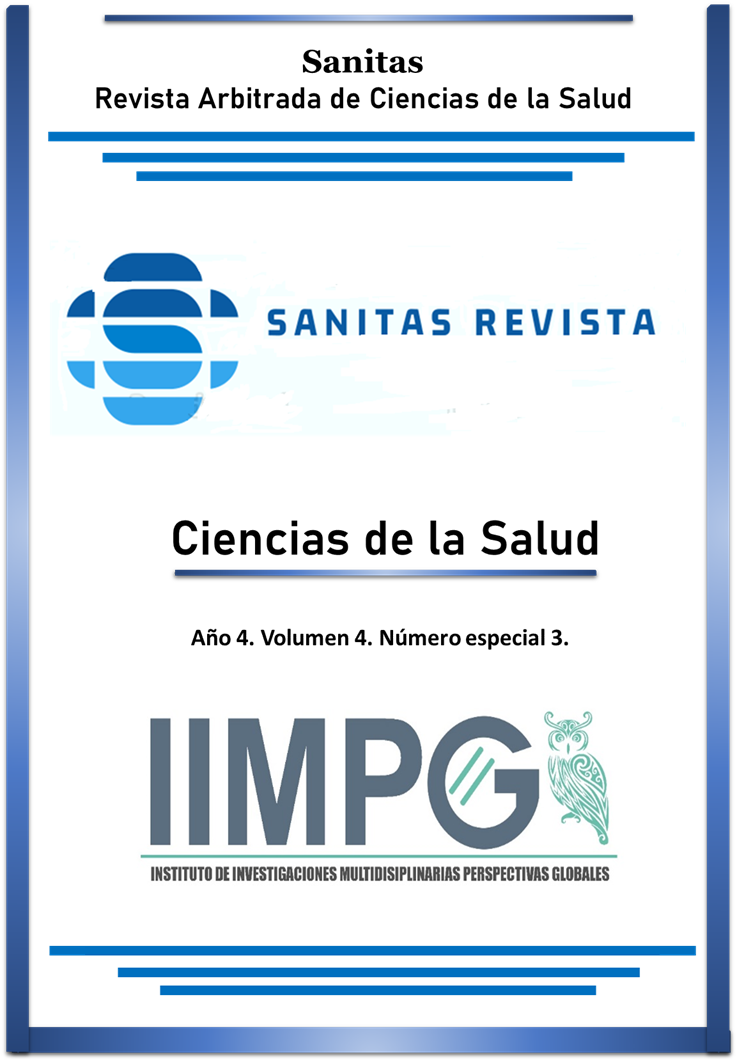Endodontic management of young permanent first molars affected by molar-incisor hypomineralisation [Manejo endodóntico de primeros molares permanentes jóvenes afectados por Hipo mineralización molar-incisivo]
DOI:
https://doi.org/10.62574/7pptzd10Keywords:
dental enamel hypoplasia, endodontics, paediatric dentistry, (Source, DeCS).Abstract
Objective: Describe the endodontic management of a young permanent first molar with severe molar-incisor hypomineralisation. Method: Clinical case. Results: Nine-year-old male patient with pain and hypersensitivity in tooth #26 due to deep caries and extensive loss of dental tissue. Pulp therapy was performed with relative isolation, chamber opening, haemostasis with Otopren, application of calcium hydroxide and TheraCal, followed by restoration with glass ionomer. The treatment took into account the fragility of the hypomineralised enamel, the presence of open apices and the behavioural management of the paediatric patient. Regular check-ups every 3 months were recommended to monitor apical closure. Conclusion: Therapeutic success requires conservative techniques, appropriate biomaterials, effective behavioural management and long-term follow-up.
Downloads
References
Elfrink MEC, Schuller AA, Weerheijm KL, et al. Hypomineralized second primary molars: prevalence data in Dutch 5-year-olds. Caries Res. 2020;54(4):327-34.
Gamboa D, Restrepo M, Arenas M. Hipomineralización molar-incisive: revisión de literature. Rev CES Odont. 2023;36(1):1-9.
Silva MJ, Sampaio FC, Oliveira MA, et al. Molar incisor hypomineralization: therapeutic management and restorative options. Int J Paediatr Dent. 2022;32(3):265-72.
Bekes K, Heinzelmann C, Jager A, et al. Treatment needs and perceptions of molar-incisor hypomineralization among German dentists. Clin Oral Investig. 2020;24(4):1371-78.
Wong H, Frazier M, White A. Pediatric dental sedation: an update. Dent Clin North Am. 2021;65(3):525-42.
Klingberg G, Broberg AG. Dental fear/anxiety and dental behaviour management problems in children and adolescents: a review of prevalence and concomitant psychological factors. Int J Paediatr Dent. 2020;30(3):111-21.
Ravindran V, George JT, Mony B. Apexogenesis using biodentine in immature molars: a case report. Int J Clin Pediatr Dent. 2021;14(2):262-65.
Setzer FC, Kim S. Comparison of apexification with mineral trioxide aggregate and regenerative endodontic treatment. Dent Clin North Am. 2020;64(1):91-109.
Fragelli CM, Jeremias F, Feltrin J, et al. Long-term follow-up of teeth affected by molar incisor hypomineralization. Braz Dent J. 2022;33(2):104-10.
Ghanim A, Morgan M, Marino R, Manton D. Risk factors for MIH: a review of current literature. Int J Paediatr Dent. 2021;31(5):482-90.
Lygidakis NA, Dimou G, Marinou D. Management of severe Molar Incisor Hypomineralisation in children: a comprehensive clinical protocol. Eur Arch Paediatr Dent. 2020;21(4):435-44.
Mejare I, Axelsson S, Dahlen G, et al. Diagnosis of the condition of the pulp: a systematic review. Int Endod J. 2021;54(9):1232-42.
Chockattu SJ, Deepak BS, Gautham PM. Recent advances in the management of immature teeth. J Clin Pediatr Dent. 2020;44(3):168-73.
Abanto J, Carvalho TS, Mendes FM, et al. Impact of Molar-Incisor Hypomineralization on oral health-related quality of life. Caries Res. 2021;55(1):13-20.
Mazzoleni S, Zerman N, Cavalleri G. Molar incisor hypomineralization: therapeutic approach and follow-up. Eur J Paediatr Dent. 2022;23(1):57-62.
Downloads
Published
Issue
Section
License
Copyright (c) 2025 María Belén Ibarra-Ramírez, German Diaz-Espinoza, Gladys Viviana Urrego-Cueva (Autor/a)

This work is licensed under a Creative Commons Attribution-NonCommercial-ShareAlike 4.0 International License.
CC BY-NC-SA : Esta licencia permite a los reutilizadores distribuir, remezclar, adaptar y construir sobre el material en cualquier medio o formato solo con fines no comerciales, y solo siempre y cuando se dé la atribución al creador. Si remezcla, adapta o construye sobre el material, debe licenciar el material modificado bajo términos idénticos.









